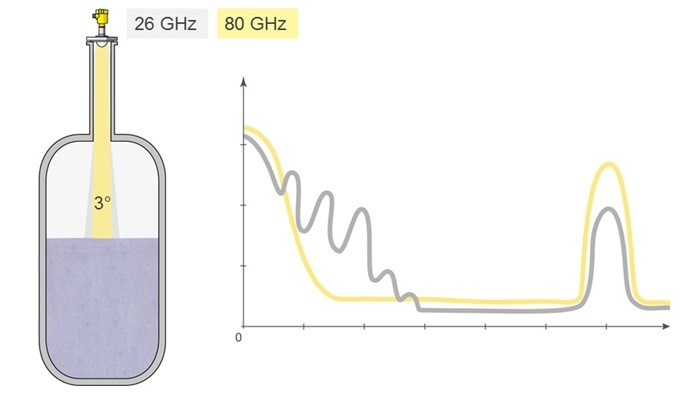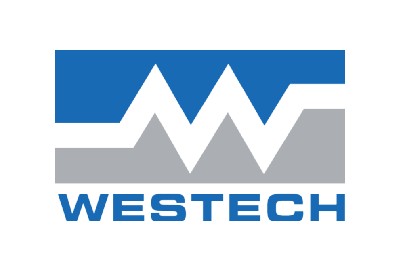On paper, using a radar sensor to measure liquid level is easy. Vessels offer plenty of space and available process connections, and tanks have simple shapes that make accurate, repeatable measurement a breeze. Media behaves as expected. Temperatures and pressures stay at a nice, predictable constant. Plant conditions are ideal forever. Everything is perfect and nothing could ever go wrong.
On paper.
However, reality in the process industry is a different story. In real life, effectively and accurately measuring liquid level with any technology takes critical thinking and creative problem solving. Containers are crammed into tight, logic-defying locations. Packed with agitators, baffles, and heating coils, tank interiors are more crowded than the first showing of a Marvel movie. Temperatures and pressures rocket up and down. Vessels have limited process connections, and safety regulations demand an instrument be installed in a counterintuitive spot. The reality of level measurement is everything is a puzzle. Nothing is perfect.
If any of the above situations hits close to home, then this one’s for you. This article will discuss three common (but painful) challenges to using a radar sensor for liquid level measurement and how to overcome them.
Challenge: Sight glass
Vessels with sight glasses are popular in many industries, but they are most prevalent in chemical processes. Sight glasses on chemical reactors allow operators to verify that a product entered a vessel and see what’s happening in a vessel in real time.
It seems logical to install a sight glass so that it’s flat. After all, a glass is nothing more than a window into a vessel, and the best way to see through a window is to face it straight on. The problem with that approach is a flat sight glass will reflect the radar energy back to the sensor, creating an extraordinary amount of signal noise and distorting the level measurement. Instead, install the sight glass at an angle so some of that energy bounces into the atmosphere. The radar signal will still penetrate the glass, hit the media, and return to the sensor, but without all the extra signal noise from the window.
The most important mounting consideration is that the sensor is perpendicular to the product surface so the radar signal releases toward the liquid. Whether in combination with an old sight glass, a new sight glass, or no sight glass, maintaining perpendicularity is a must in order for a liquid to reflect a signal back to a sensor.
Challenge: Mounting nozzle
One might find mounting nozzles attached to vessels in refineries, chemical facilities, pharmaceutical plants, even animal waste digesters. They’re everywhere. One of their most common functions is safe access to sensors. In plants with multiple tall tanks, operators often move from vessel to vessel via a catwalk, and manufacturers attach long nozzles to vessels so their employees can read the level device from the safety of said catwalk.
Using a radar level device on a nozzle has proven problematic. Even with a guide extension, wide radar beam angles can contact the sides of the nozzle, creating multiple echoes that make for a confusing level reading. This setup also causes a ringing effect that makes level measurement impossible in the area of the vessel where the nozzle ends and the tank begins. In effect, this noise costs operators valuable tank space as they cannot measure to the top of the vessel. To maximize usable tank space, many operators eschew radar instruments and turn to maintenance-intensive devices like mechanical floats, guided wave radar sensors, or yo-yo level indicators to measure level through a nozzle. The popularity of these devices is likely to decline in the near future, as a better alternative has emerged.
The excellent focusing of the 80 GHz VEGAPULS 64 makes it a natural fit for measuring liquid level on vessels that feature long nozzles. The narrow radar beam misses nozzle side walls, creating an easy-to-read signal. Additionally, a guide extension is unnecessary with the VEGAPULS 64, so operators can now measure level up to the end of the nozzle, eliminating wasted space. With no mechanical or moving parts, the VEGAPULS 64 is a maintenance-free way to achieve reliable, repeatable, and accurate liquid level measurement—even when a nozzle is present.
Challenge: Ball valve
Common to the gas and chemical industries, ball valves allow users to disconnect the sensor from the process without interrupting the ongoing process, and have the added benefit of making equipment as easy as possible to service. Unfortunately, in practice, a separating device like this causes significant interference for radar sensors. The reason for this is discontinuity.
The interior of the ball valve, with its changing diameters and its multitude of surfaces, creates a lot of signal noise. Plus, ball valves are commonly paired with either a bleed ring or a spool piece to capture lingering gas after the valve is closed. These fittings offer more surfaces and more opportunity for the amplification of extraneous signal noise. Standard radar sensors have a difficult time filtering these false echoes from those reflected by the measured media. This is not to say that 26 GHz radar fails to measure when mounted on a ball valve; these sensors are working in numerous applications across the world. Achieving reliable level in these circumstances requires a little something extra.
The challenges presented by ball valves are similar to the difficulties one faces when measuring with a nozzle, and as such have similar solutions. To keep the valve noise easily distinguishable from the media signal, users may set the 100% mark lower than desired. This allows for easy tracking, but prevents optimal use of vessels. The latest filtering software offers some relief, but the best solution is to use an 80 GHz radar sensor with a four-inch mounting flange. This setup will keep the radar beam focused with minimal noise from the valve and will also allow for the whole vessel to be used.
Conclusion
It would be so much easier if plants operated on paper. Liquid level measurement in real applications takes finesse, and the imperfect world of the process control industry demands user creativity. Setting up a reliable, repeatable radar level measurement system may require inventive solutions that account for vessel construction, space, safety regulations, and media behavior. Plant operators should be judicious when selecting suppliers. It behooves them to work with a process instrumentation manufacturer who will recommend the right product and create the right solution for their specific measurement needs. The right partner will anticipate plant needs and come up with creative ways to conquer process-specific challenges.
Learn More
To learn more about Westech Industrial’s 80 GHz VEGAPULS 64 please visit our website at https://bit.ly/2ySj137 or call and speak to one of our technical representatives at 1-800-912-9262.
Share This:





 CDN NEWS |
CDN NEWS |  US NEWS
US NEWS 

































COMMENTARY: BC Energy Faces a Complicated Puzzle – Margareta Dovgal, Resource Works